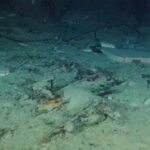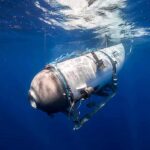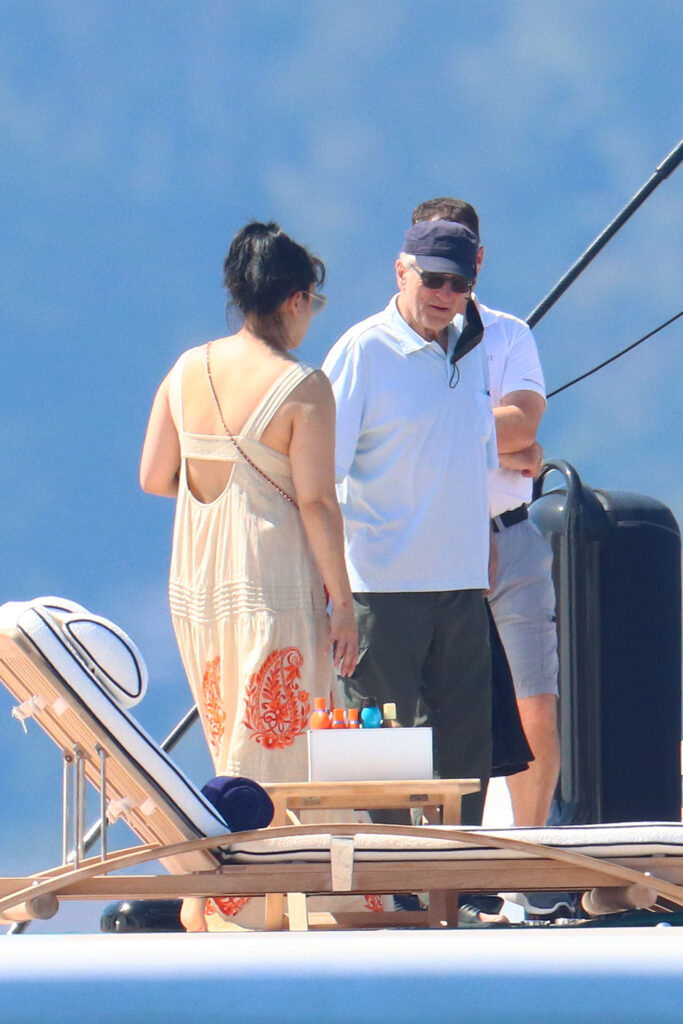On June 18, 2023, five people boarded a submersible called Titan, hoping to see the legendary wreck of the Titanic with their own eyes. They never returned. What went wrong in this ambitious and risky expedition? And who is responsible for the worst submersible disaster in history?
The Expedition
Titan was operated by OceanGate, a private company that offered deep-sea tours to wealthy adventurers. The company had been planning to visit the Titanic wreck site since 2017, when it announced its intention to build a new submersible that could withstand the extreme pressure at 12,500 feet (3,800 meters) below the surface.
The submersible was named Titan, after the Greek gods who ruled before the Olympians. It was designed to carry five people: a pilot, a co-pilot, and three passengers. It had a carbon fiber hull, a titanium sphere for the crew, and an acrylic dome for viewing. It was equipped with lights, cameras, sonar, and communication systems.
The expedition was scheduled to take place in June 2023, coinciding with the 111th anniversary of the Titanic’s sinking. OceanGate sold tickets for $195,000 per person, promising an unforgettable experience of exploring the iconic shipwreck. The company claimed that it had a waiting list of more than 1,000 people.
The expedition was supported by a surface vessel called Polar Prince, which carried Titan and other equipment. Polar Prince departed from St. John’s, Newfoundland, on June 16 and arrived at the dive site on June 17. The first dive was planned for June 18.
The Accident
On June 18, at 9:15 a.m., Titan was launched from Polar Prince and began its descent to the Titanic wreck site. The crew consisted of Stockton Rush, the founder and CEO of OceanGate; Guillermo Söhnlein, the co-founder and chief operating officer of OceanGate; James Balogun, a British adventurer and filmmaker; Jean-Pierre Lacroix, a French diver and marine biologist; and Hassan Khan, a Pakistani businessman and his son Omar Khan.
The dive was expected to take about six hours: three hours to reach the wreck site, one hour to explore it, and two hours to ascend back to the surface. The crew communicated with Polar Prince via an underwater telephone system.
At 10:45 a.m., Titan reached a depth of 10,000 feet (3,000 meters), about halfway to its destination. The crew reported that everything was going well and that they were enjoying the view of the ocean floor.
At 10:50 a.m., Polar Prince received a garbled message from Titan that sounded like “We have a problem”. Then there was silence.
Polar Prince tried to contact Titan repeatedly but received no response. The surface vessel also noticed that Titan’s sonar signal had disappeared from its screen.
Polar Prince alerted the authorities and initiated a search and rescue operation. Several vessels and aircraft joined the effort, including the Canadian Coast Guard, the U.S. Coast Guard, the U.S. Navy, and the Royal Canadian Navy.
After nearly 80 hours of searching, a remotely operated underwater vehicle (ROV) found a debris field containing parts of Titan, approximately 1,600 feet (500 meters) from the bow of the Titanic. The ROV also detected an implosion signature on its sonar system.
The implosion signature matched the one recorded by the U.S. Navy on June 18 at 10:51 a.m., one minute after Titan’s last communication. The Navy had declassified its data after learning about Titan’s disappearance.
The implosion indicated that Titan’s pressure hull had failed catastrophically while descending, causing an explosive compression of air inside the submersible. The force of the implosion was estimated to be equivalent to several tons of TNT.
The implosion would have killed all five people inside Titan instantly. There was no chance of survival or escape.
The Investigation
The cause of Titan’s implosion is still under investigation. Several factors could have contributed to it, such as:
- A manufacturing defect or damage in Titan’s hull or sphere
- A failure or malfunction of Titan’s systems or equipment
- A human error or negligence by Titan’s crew or OceanGate’s staff
- An external impact or interference by an object or animal
The investigation is complicated by the fact that Titan was operating in international waters, outside the jurisdiction of any single country. The responsibility for the investigation is shared by several agencies, such as:
- The Transportation Safety Board of Canada (TSB), as the flag state of Polar Prince
- The U.S. National Transportation Safety Board (NTSB), as the country of origin of OceanGate and Titan
- The International Maritime Organization (IMO), as the global regulator of maritime safety
- The United Nations Educational, Scientific and Cultural Organization (UNESCO), as the protector of the Titanic wreck site
The investigation is also hampered by the difficulty of retrieving Titan’s wreckage from the ocean floor. The debris field is located in a remote and hostile environment, where visibility is low, currents are strong, and pressure is immense.
The recovery of Titan’s wreckage could provide valuable clues to the cause of the implosion, such as:
- The condition and integrity of Titan’s hull and sphere
- The presence and location of any cracks, holes, or fractures
- The state and function of Titan’s systems and equipment
- The data and recordings from Titan’s cameras, sonar, and communication systems
The recovery of Titan’s wreckage could also help to identify and recover the remains of the five people who died in the accident. Their families have expressed their wish to have a proper burial for their loved ones.
The recovery of Titan’s wreckage could also prevent further damage to the Titanic wreck site, which is considered a cultural heritage site by UNESCO. The debris field could pose a threat to the integrity and preservation of the Titanic, as well as to other submersibles that may visit it in the future.
The Controversy
The accident has raised questions about the safety and ethics of OceanGate’s expedition. Critics have accused OceanGate of being reckless, irresponsible, and greedy.
OceanGate has been criticized for not seeking certification for Titan, which would have required independent testing and verification of its design and performance. OceanGate argued that certification was not necessary or feasible for a submersible that was constantly evolving and improving.
OceanGate has also been criticized for dismissing safety warnings from experts and authorities. OceanGate ignored or rejected advice from James Cameron, the director and explorer who visited the Titanic wreck site in 2001 and 2005; Robert Ballard, the oceanographer who discovered the Titanic wreck site in 1985; and UNESCO, which declared the Titanic wreck site a protected area in 2012.
OceanGate has also been criticized for exploiting the Titanic wreck site for commercial gain. OceanGate claimed that its expedition had scientific and educational value, but critics argued that it was mainly a publicity stunt and a money-making scheme.
OceanGate has defended its expedition as a legitimate and innovative venture that advanced human exploration and knowledge. OceanGate said that it followed all applicable laws and regulations, that it took all necessary precautions and measures, and that it respected the Titanic wreck site as a memorial.
OceanGate has also expressed its condolences and sympathy to the families and friends of the five people who died in the accident. OceanGate said that it was cooperating with the investigation and that it was committed to finding out what happened and why.
The Future
The accident has cast a shadow over the future of deep-sea tourism. The industry is already worth billions of dollars, with more than 100 submersibles operating around the world. The demand for frontier travel is growing, as more people seek unique and extreme experiences.
However, the accident has also exposed the risks and challenges of deep-sea tourism. The industry faces technical, legal, ethical, and environmental issues that need to be addressed. The industry needs to ensure that its submersibles are safe, reliable, and compliant; that its operators are qualified, responsible, and accountable; that its customers are informed, prepared, and respectful; and that its destinations are protected, preserved, and honored.
The accident has also sparked a debate over the fate of the Titanic wreck site. Some people argue that human visits to the Titanic should be banned or restricted, to prevent further damage or disturbance to the shipwreck. Others argue that human visits to the Titanic should be allowed or encouraged, to promote awareness or appreciation of the shipwreck.
The accident has also reminded us of the tragedy and legacy of the Titanic itself. More than 1,500 people died when the Titanic sank on April 15, 1912. Their stories have inspired generations of people with their courage, sacrifice, and love. Their memory lives on in our hearts and minds.















































































Who is Sarah Huckabee Sanders?
vaibhav washniker